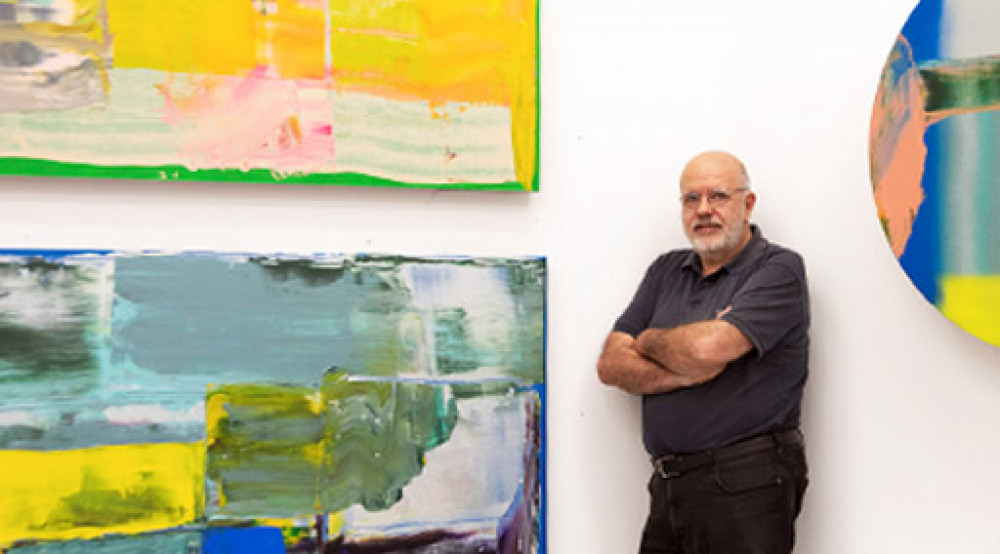
Pedro Calapez
Lisbon, Portugal, 1953.
Lives and works in Lisbon, Portugal.
He was graduated in Fine Arts, specializing in Painting in 1981, from the University of Fine Arts of Lisbon.
Pedro Calapez is one of the figures who, since the late seventies, has been deeply studying the pictorial concept, both in its technical and conceptual aspects. Closely linked to the practices of the support surface movement, his painting is based on color and the constructive aspects of form. The use of large masses of pictorial matter with a neo-expressionist brushstroke, together with the fragmentation of the support, are the distinctive features of the work of Calapez, one of the most renowned Portuguese artists.
A possible horizon line, symbolized by the separation of the two panels, divides the painted surfaces. This line of separation is not a horizon line, because here neither the earth nor the sky is thought of. Colors and shapes are not combined in a predictable way. In the environment in which Nature surrounds us, we try to structure the landscape in our eyes, looking for an up and a down, a far and a near. The seduction that the landscape establishes, and that results from an effective effort of the observer, is concretely constituted in the physical reality of the universal forces: the gravitational, rotational and translational movements of the earth, or recently the climatic change. The feet cling to the earth while the gaze imagines the distance in the sky. These works aim at this discussion: what is landscape, and what does it establish in the gaze or how does the gaze establish it; what is the weight of tradition. Drifting landscape. P.C.